Eureka N!ergy 9 Handleiding
Bekijk gratis de handleiding van Eureka N!ergy 9 (2 pagina’s), behorend tot de categorie Tent. Deze gids werd als nuttig beoordeeld door 41 mensen en kreeg gemiddeld 3.7 sterren uit 21 reviews. Heb je een vraag over Eureka N!ergy 9 of wil je andere gebruikers van dit product iets vragen? Stel een vraag
Pagina 1/2

REV B 4.09
fig 17
green
blue
fig 16
Component List:
1 Wired Tent Body, 2 Tent Poles, 1 Tent Fly, 2 Fly Poles, 1 Stake Bag w/Stakes,
1 Pole Bag, 4 Guy Ropes and 1 Carry Bag,
Your tent is now ready.
NOTE:
• Although it is possible to pitch this tent alone, it is faster/easier with two people.
• Do not drop tent b Do not bounce tent bag or pole bag on its end. ag on its end to get the
tent out These actions may cut the shockcord and/or damage the pole ends..
• The N!ergy series tents are pre-wired with three 12V outlets Take care to keep them in .
their sleeves and avoid stepping on the sockets and wires during assembly.
3. Place a corner pin into the end of one of the poles.
At the opposite end, with the pole in one hand and a
pin & ring in the other, feed the pole up, bending it
evenly along its length to create an arc. Place the pin
into the end of the pole to maintain tension. Repeat
with the other pole. See fig 3 & 4.
fig 1
fig 2
Fly
Poles
Tent
Poles
fig 4
fig 5
fig 11
fig 15
fig 10
fig 6
fig 7
fig 8
4. Raise up the tent poles. Step inside the tent door and attach the peak
of the tent to the center of the top pole with the web clip Attach the .
remaining roof clips. See fig 5.
5. Attach the side clips to the poles to create a freestanding tent.
Place it in the desired location. See fig 6.
6. Stake the tent down through the corner web loops. Stake
opposite corners while applying tension to smooth the floor
wrinkles, squaring the tent as you work.
Also, stake out the floor
beckets at the center of each side and at the back of the tent.
See fig 7 & 8.
1. Unroll and unfold the tent on the ground. Separate the rest of the components and
place to one side. Open the door before pitching the tent. Do not stake the tent down
(however, in windy conditions, stake down one corner that faces into the wind). See fig 1.
2. Assemble the shockcorded poles.
Keep the end sections from snapping
together, as this can damage the
ends. Make certain each plain end has
been properly seated into the metal
ferrule. See fig 2.
8. Attach the fly to the tent.
Turn the fly assembly over and align it so that the poles point out
over the doors. Grasp the corners of the of the fly and drag them up and over the roof to
completely cover the tent. (This is much easier with two people.)
At the corners of the tent, reach under the fly and attach the hook & loop straps to the tent
poles, securing the fly in place. See fig 12.
At the bottom/corners of the tent, attach
the shockcorded J-hooks to the
rings on the corner webs. See
fig 13.
At the bottom/sides of the fly,
pull out and stake down the
web loops.
9. Tie a guy rope to each
of the 4 rings
attached to the fly
and stake out.
Adjust tension
with the in-line sliders.
See fig 14 & 15.
E! Power System: To use, you will need a power source. Our is sold separately. Once connected to E! Power Pak™
power, the control will display “green” at any switch that is “ON” and the “ON” socket will glow blue. See fig 16.
E! Power Port: Open zipper and run extension cord through opening.
Close zipper so that it rests next to the extension cord. Make sure
the zipper cover is not twisted or tucked The cover must lay flat .
against the outside of the tent to keep out rain.
Accessories: E! Power Fan/Light, E! Power Reading Light and an
E! Power 12v Adapter Cord.
Sweep Out: Inside, at the bottom of the door is a sewn-in web loop.
Pull this loop to the outside and stake it down to provide a ready exit
for floor sweepings. See fig 17.
Take Down: Pull up all stakes. Release the fly’s hook & loop straps. Remove fly.
Remove fly poles. Remove clips from tent poles and pull poles off of the pins.
Collapse all poles and sto Fold the tent onto itself then fold the fly and lay it w.
on tent. Roll up both towards the open door and stow.
Read the important safety instructions on the reverse side.
fig 3
7. Attach the fly to the poles. Lay out the fly with the inside side up, on ground at the front
of the tent. Fit the fly poles into the pockets sewn to the hem The poles run from side to .
side down the center of the fly forming an X. Secure the fly to the poles by wrapping the
hook & loop fastener around the fly poles. See fig 9, 10 and 11.
fig 9
fig 12
fig 13
fig 14
Assembly Instructions
for the N!ergy 9 Tent

-
REV. C FEB.09
SEAM SEALING:
We recommend use of a sealer such as Kenyon Seam Sealer 3 or
McNett Outdoor SeamGrip
®.
• Work in a fully ventilated area.
• Set the tent up or lay the tent out flat Taut seams allow for even .
application and penetration of the sealer.
• Decide which seams need to be sealed. Seams that will be exposed
to rain, runoff, or ground level water are a must for sealing, seams on
uncoated nylon or mesh panels don’t need treatment. There is no
need to seal the seams in the roof or the factory taped seams. We
recommend sealing both floor and fly seams and reinforcements.
• Apply sealant to the inside and outside of all exposed seams. Several
thin layers will work better than one thick layer. Read and follow
manufacture’s instructions.
STAKING:
All tents need to be staked down to keep them from blowing away.
Placing heavy objects inside is just not adequate.
• Once the tent bo stake it out before the fly is put ondy is erected, . This
enables you to square the tent up to ensure that the goes on fly
properly and that the seams align with the frame. Pull the base of the
tent taut between each web stake out loop or ring & pin. Make sure
that all corners are square. It is important that you don’t stake the
tent out too tightly. You will know it’s too tight, if the door zippers can
not be easily operated. Drive stakes through the web loops, or with
ring & pin, drive the stake just outside the ring so that the “J” hook
catches it. Tie a piece of cord or web into a loop through the ring to
be used as a large stake loop if needed.
• fly With the tent properly staked, drape the over the frame, attach its
tent connection points and stake down any pull outs.
• Do not attempt to remove the stakes by pulling on the tent becket
loop, as this could cause the fabric to tear. The best way is to pry on
the stake itself.
Staking in special conditions:
• Sand. Use long, broad stakes with plenty of surface area.
• Hard, Rocky, or Frozen Soil. Steel stakes work best. Store steel
stakes separately. Their sharp edges can cut fabric and leave rust
stains, which might damage your tent.
• . wSno e d ” . Tie e t to d s Us “dea man anchors th ten burie object
(branches, tent bags, or stuff sacks filled with snow); or tie tents to
snow shoes, skis, or ski poles, which are stuck in the snow.
GUY LINES:
Do not depend on staking alone to keep your tent secure in high wind.
Don correctle y, e n of y s n save r t in th additio gu line ca you ten
exceptional weather.
• Make sure that each hook and loop fastener on the underside of the
fly is securely wrapped around the tent frame.
• Attach the guy rope, from the stake bag, to each guy out loop on fly.
• Stake all guy lines 6’ out from the edge of the tent. The optimal angle
from the ground to the guy line is 45˚. See fig a. In high wind,
additional guy lines should be used. On the N!ergy 9 and 1210 add a
secondary guy line off of each guy out point. See fig b.
• On the N!ergy 1310, guy ropes are pre-attached & stored in pockets at
each guy out location. In high wind, attach a secondary line at each
guy out point on the and half way down the tan mid-poles. See fig c. fly
The N!ergy Screenhouse has pre-attached reflective guy ropes at each
corner.
CONDENSATION & VENTING:
Through perspir tion and bre thing an adult ive off of ter a a , g s about a pint wa
overnight. If it cannot escape, the water vapor condenses to liquid. Most often,
water found in the tent is a result of this condensation rather than from the tent
leaking. Condensation often forms where the sleeping bag touches the side of
the tent, under the sleeping pad, or on coated surfaces such as the door aps. A fl
tent’s double wall construction allows the vapor to escape through the roof to the
outside, keeping the inside of the tent dry.
Leave windows partially open at night to provide cross ventilation and further
reduce condensation. Cross ventilation becomes more important in very humid
or extremely cold conditions when the permeable roof is less effective. The
fe ture th enhanc ventil tio ar wind ws short-sheete (bottoa s at e a n e o , d flys m
venting), roof vents, and High/Low venting doors These are specific to each tent. .
ULTRAVIOLET LIGHT:
Ultraviolet light damage to tent fabric is caused by excessive exposure to sunlight.
While our fabrics are UV resistant, any synthetic fabric is susceptible to UV
degradation. UV damage will cause nylon and polyester to become brittle and
tear easily. We recommend that you use the rain fly even on clear days. It acts as
a sunscreen to the tent. A rain is both easier and less expensive to replace if fly
damaged. UV damage can be minimized by erecting tents on shaded sites with
low exposure to direct sunlight.
GENERAL POLE CARE:
• Never let tent poles snap together as this can damage the pole end.
• Do not drop tent or pole bags on their ends and do not bounce a tent bag on its
end to get the tent out. These actions may cut the shock cord and damage the
pole ends.
• The aluminum frame may bend slightly and take a “set” through usage; this
normally does not affect the performance of the frame.
GENERAL TENT CARE:
• Sweep the tent floor daily to prevent damage from stones.
• Try not to wear shoes inside your tent.
• Use a ground cloth whenever possible.
• Do not keep food inside a tent. Hungry critters will chew through tent fabric in
search of food.
STORAGE:
• Make sure the tent is completely dry, then store loosely rolled, in a dry, cool
place. To prevent dust from collecting on the tent, cover it with a cloth. This
allows the nylon/polyester fabric to breathe.
• Ideally, the tent poles should be stored in their fully assembled state. This
reduces the tension on the shock cord, prolonging its life.
• The tent bag should be used only as a carry sack and not for storage.
COLOR TRANSFER:
• Do to the nature of tent fabrics, color can transfer from darker to lighter fabrics
when the two fabrics are in contact over time when wet, damp or exposed to the
combin tio moistur an hig he Thi doe no effec th tenta n of e d h at. s s t t e ’s
performance. To prevent / minimize color transfer, always make sure your tent is
completely dry prior to packing and storage.
CLEANING:
• Clean the tent by setting it up and wiping it down with a mild soap (liquid hand
soap) and lukewarm water solution. Rinse thoroughly and dry completely.
Never use detergent, washing machines or dryers because they can damage
the tent’s protective coating and seams. After cleaning, be sure the tent is
completely dry, a r, especially the he vie double-stitched areas such as the
seams, before storing or mold / mildew are likely to grow.
• Clean the tent poles with a cloth and lubricate them with silicone spray. This is
especially necessary after ocean side camping to remove salt spray so the
poles don’t corrode or stay gritty.
• Clean the zippers with a quick dip in water and then dry them off. This is
especially important if you’ve been camping in a location with sand/dirt. If you
don’t clean the zippers, the sliders will wear out and eventually the teeth will
become inoperable.
ALTERATIONS OR MODIFICATIONS:
DO NOT misuse, modify or alter this product in any way from its condition at the
time of sale. Alteration, modification or any use of this product contrary to the
accompa ying written instructions shall void the warrantn y. r, any Moreove
misuse, a n or a n of e t l e n alter tio modific tio th produc shal absolv Johnso
Outdoors Gear LLC of any liability for property damages or injuries sustained
as a result of such misuse, modification or alteration.
electrocution or electric shock hazard
fig.a fig.c
fig.b
LIMITED WARRANTY:
What Is Covered: Johnson Outdoors Gear LLC
warrants to the original purchaser
that its products are free from defects in material and workmanship, for the life of
the product, except as qualified below. The life of the product is determined from
the date of purchase until such time as the product is no longer serviceable due to
normal wear and tear.
What Is Not Covered:
Johnson Outdoors Gear LLC
shall not be responsible for the
natural breakdown of materials that occurs inevitably with extended use (e.g., Ultra
Violet (UV) light damage on tents, exhausted zippers), or defects caused by accident,
abuse, alteration, animal attack, storm damage, misuse or improper care.
THERE ARE NO OTHER EXPRESS WARRANTIES BEYOND THE TERMS OF THIS LIMITED
WARRANTY. IN NO EVENT SHALL JOHNSON OUTDOORS GEAR LLC BE LIABLE FOR
INCIDENTAL OR CONSEQUENTIAL DAMAGES.
Some states do not allow the exclusion or limitation of incidental or consequential
damages, so the above limitation or exclusion may not apply to you.
What Johnson Outdoors Gear LLC Will Do: If after inspection we find that a
product failed due to a manufacturing or material defect, we will repair or replace
the product, at our option, without charge.
How to Obtain Warranty Service: Return the product, freight prepaid, to the Dealer
from whom it was purchased; or, contact our Customer Satisfaction Department for
return authorization: toll free 1-800-572-8822. Collect shipments or shipments
without return authorization cannot be accepted. The product registration card
packaged with our product need not be returned for the warranty to be effective
and for you to receive warranty service.
Repairs: If your
Johnson Outdoors Gear LLC
product needs service or repair due to
normal wear and tear, animal attack, accident or some other reason that is not
covered under the warranty we will provide the necessary service for a reasonable
charge, plus shipping and handling. We require that products accepted for any
repair be properly cleaned according to our recommended care instructions. Please
send your product or component that requires repair (e.g., tent fly), postage
prepaid, along with a description of what needs attention. For service and repairs,
please contact our Customer Satisfaction Department: toll free 1-800-572-8822
How State Law Relates To This Warranty: This warranty gives you specific legal
rights, and you may have other rights that vary from state to state.
Johnson Outdoors Gear LLC
The use of the Power Port with an extension cord running
in to the tent could result in electrocution or electric shock,
or fire or explosion hazards. For these reasons, when using
the Power Port:
DO NOT
allow an extension cord or any electrical device to come into
contact with water or condensation inside the tent.
DO NOT
use an extension cord if it is worn or damaged.
DO
use only extension cords that are marked for OUTDOOR USE.
DO
a V connect extension cord only to 120 olt GFCI protected outlet with
proper ground. If GFCI outlet is not available, use an extension cord with
GFCI protection built in.
DO
make sure the part of the extension cord that is outside the tent is lower
than the power port so that rain will not follow the cord into the tent.
DO
follow all warnings, instructions, and safety precautions from the
manufacturer of the extension cord.
To reduce risk of damage to electric plug or cord, pull by the plug rather than
the cord when disconnecting the E! Power Pak from an extension cord.
Your failure to follow these warnings could cause death, serious injury or
permanent disability to you or others. It is always recommended to have
someone nearby to assist in case of an emergency.
SAFETY INFORMATION: IMPORTANT SAFETY INSTRUCTIONS
Save e . s l s t y d thes instructions Thi manua contain importan safet an
oper tina g instructions applicable to the safe and efficient use of the E!
Power Pak DC power source and your Eureka! E! Power shelter with 12v
outlets.Failure to use the power pack in any way other than originally
intended by Johnson Outdoors Gear LLC will void the warranty and may
damage the unit or result in injury.Use of an attachment not recommended
or sold by Johnson Outdoors Gear LLC may result in risk of fire, electric
shock, injury to persons, or property damage.The E! Power Pak is not
intended for use by children at any time.
DO NOT
insert any foreign objects into the 12v outlet on the E! Power Pak, or
the 12v outlets in the shelter.
DO NOT
expose the E! Power Pak or 12v outlets in the shelter to water, rain,
snow or spray.
DO NOT
connect any device with a neutral conductor (via an AC inverter)
to the E! Power Pak or the 12v outlets.
DO NOT
use the E! Power Pak if it is damaged. Use care not to drop the unit. A
drop or fall can damage the unit even though no visible damage may be
apparent.
DO NOT
expose the E! Power Pak to temperatures over 104˚F/40˚C. Always
store the E! Power Pak in a dry environment. Ideal storage temperature is
70˚F/21˚ C.
DO NOT
permit the battery in the E! Power Pak to freeze. Never attempt to
recharge a frozen battery.
DO NOT
disassemble the E! Power Pak. Incorrect reassembly may result in
a risk of electric shock or fire.If your E! Power Pak requires service, call
Schumacher Electric at 1-800-621-5485.
KEEP ALL FLAME AND HEAT SOURCES AWAY FROM THIS TENT FABRIC.
This tent meets the requirements of flammability CPAI-84. The
fabric may burn if left in continuous contact with any flame
source. The application of any foreign substance to the tent
fabric may render the flame-resistant properties ineffective.
DO NOT
operate any device which burns fuel inside your tent.
Combustion consumes oxygen and can produce dangerous
levels of carbon monoxide, which could lead to serious injury or
death.
Your failure to follow these warnings could cause death, serious
injury or permanent disability to you or others.
Product specificaties
| Merk: | Eureka |
| Categorie: | Tent |
| Model: | N!ergy 9 |
Heb je hulp nodig?
Als je hulp nodig hebt met Eureka N!ergy 9 stel dan hieronder een vraag en andere gebruikers zullen je antwoorden
Handleiding Tent Eureka

2 Juni 2023

15 Mei 2023

13 Mei 2023

12 Mei 2023

10 Mei 2023

7 Mei 2023

6 Mei 2023

4 Mei 2023

3 Mei 2023

2 Mei 2023
Handleiding Tent
- Kayoba
- Mountain Hardwear
- Skandika
- Robens
- Asaklitt
- Velleman
- Thermarest
- Goldcamp
- Rollei
- SunnCamp
- Ventura
- LECO
- Clas Ohlson
- Black Wolf
- Woods
Nieuwste handleidingen voor Tent
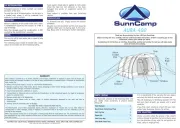
1 September 2025
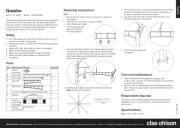
15 Juli 2025
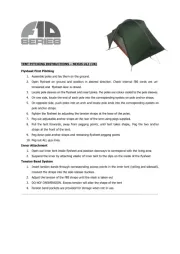
14 Juli 2025
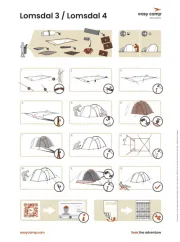
14 Juli 2025
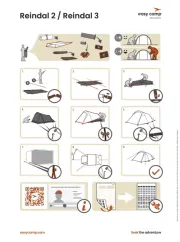
14 Juli 2025
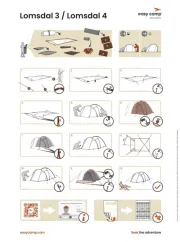
14 Juli 2025

6 Juli 2025
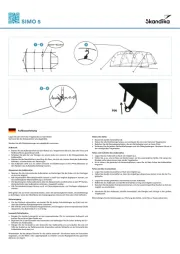
5 Juli 2025
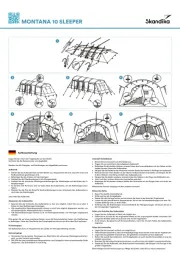
2 Juli 2025
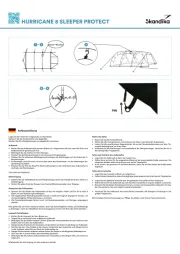
2 Juli 2025